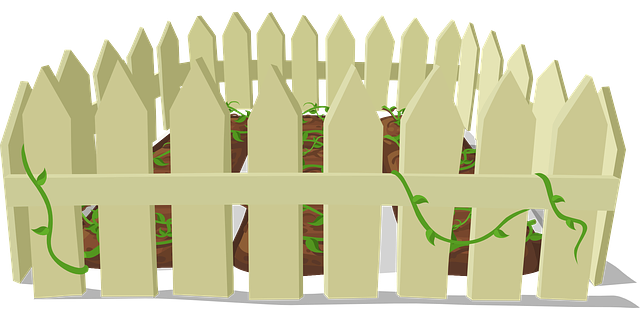DIY Fence Installation: A Comprehensive Guide for New Bedford Homeowners
Are you looking to enhance your New Bedford, Massachusetts property with a new fence? This comprehensive guide is tailored for DIY enthusiasts aiming to install a durable and aesthetically pleasing fence. From planning permissions and choosing the right materials suited to the local climate to gathering the necessary tools and following step-by-step instructions, we cover it all. Discover the secrets to a successful project, ensuring your new fence not only boosts security but also adds value to your home.
- Planning Your Fence Installation: Permits & Measurements
- Choosing the Right Fence Material for New Bedford Climate
- Tools & Equipment Needed for DIY Fence Project
- Step-by-Step Guide: Post Holes to Rail Installation
- Tips for Maintaining Your New Fence in Massachusetts
Planning Your Fence Installation: Permits & Measurements
Before beginning your DIY fence installation, careful planning is key. The first step involves obtaining any necessary permits from New Bedford city authorities. These permits ensure your project complies with local building codes and zoning regulations. Check with the New Bedford Planning Department to understand what types of fences require permits and gather the required documentation.
Next, accurately measure the perimeter where you plan to install the fence. This includes taking note of any existing structures, trees, or other obstacles that might affect the placement of posts. Using a tape measure, mark out the desired fence line, ensuring it aligns with your property boundaries as indicated on your deed or survey documents. Accurate measurements will help you purchase the right amount of fencing material and properly space the posts for a sturdy, level fence.
Choosing the Right Fence Material for New Bedford Climate
When it comes to choosing fence material for New Bedford’s climate, durability and weather resistance are key considerations. The region’s harsh winters and frequent rainfall require materials that can withstand snow, ice, and moisture without warping or rotting. Wood, while aesthetically pleasing, may not be the best choice due to its tendency to swell and shrink with changing temperatures and humidity levels. Instead, homeowners in New Bedford should opt for fencing materials like vinyl, wrought iron, or chain link, which offer superior resistance to rot, rust, and decay.
Vinyl fences are a popular option as they are low-maintenance, easy to install, and can mimic the look of wood without the upkeep. Wrought iron fences provide a classic, elegant aesthetic and can withstand extreme weather conditions. Chain link fences are durable and secure, making them ideal for both residential and commercial properties. Consider your personal preference, budget, and the fence’s functional purpose when selecting material to ensure it stands the test of time in New Bedford’s climate.
Tools & Equipment Needed for DIY Fence Project
To tackle a DIY fence installation project in New Bedford, Massachusetts successfully, there are several essential tools and pieces of equipment you’ll need. Start with basic hand tools like a hammer, tape measure, level, and a post-hole digger or shovel. These will help you mark out your fence line, ensure posts are plumb, and dig the holes for a solid foundation.
For more advanced tasks, you’ll require power tools such as an electric drill with various bits, a circular saw (for cutting fence boards), and a string trimmer or hedge trimmer to tidy up any edges along your property lines. Don’t forget safety gear, including work gloves, eye protection, and earplugs, to shield yourself from potential hazards during the installation process.
Step-by-Step Guide: Post Holes to Rail Installation
To install your fence properly, follow this step-by-step guide from post holes to rail assembly. Begin by marking out the fence line with string and stakes, ensuring it aligns with your property’s boundaries. Next, use a hole digger or shovel to excavate two holes at each corner of where you want to place a post. The holes should be deep enough – approximately one-third of the post’s height – to provide stability. Insert the fence posts into the holes and ensure they stand upright by tapping them gently with a rubber mallet. Pour concrete into each hole, completely filling it up, and allow the concrete to set for at least 24 hours. Once the concrete is cured, attach the horizontal rails to the posts using brackets. Ensure the rails are level and secure before moving on to the next step. Finally, attach the fence panels to the rails using nails or screws, following the manufacturer’s instructions for proper spacing and alignment.
Tips for Maintaining Your New Fence in Massachusetts
After installing your new fence, proper maintenance is key to ensuring its longevity and aesthetic appeal. Given the diverse weather conditions in Massachusetts, from harsh winters to humid summers, regular upkeep is essential. Start by inspecting your fence at least twice a year for any signs of damage, such as cracked posts or warped panels. Promptly repair or replace damaged sections to prevent further deterioration.
Consider sealing and painting your fence regularly, ideally every 2-3 years, to protect it from the elements. Use high-quality sealants and paints designed for outdoor use. A fresh coat of paint not only enhances the visual appeal but also shields the fence from rust, mold, and mildew, common issues in New Bedford’s climate. Keep the area around your fence clean and free of debris to prevent rot and ensure easy access for future maintenance checks.
